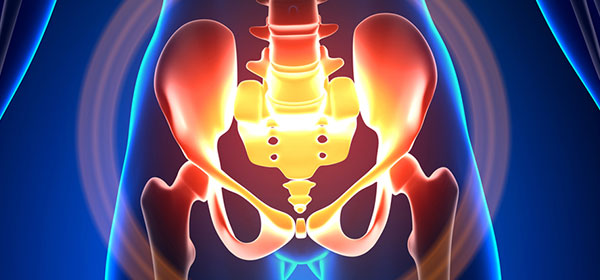A weakened pelvic floor is a common complaint for many women and men and, while not necessarily harmful to health, it can lead to disruptive and embarrassing situations. Weak pelvic floor muscles can lead to loss of bladder control, bowel incontinence, sexual difficulties and, in extreme cases, prolapse.
What are the pelvic floor muscles?
Pelvic floor muscles are the layer of muscles that support the pelvic organs and span the bottom of the pelvis. The pelvic organs are the prostate gland, bladder and bowel in men, and bladder, bowel and uterus in women. These muscles stretch like a trampoline from the tailbone (coccyx) to the pubic bone and from one sitting bone to the other (side to side). These muscles are normally firm and thick.
Those most affected by pelvic floor problems include:
- women experiencing or who have experienced menopause
- women who are pregnant or who have just given birth
- women who have had gynaecological surgery
- men who have had surgery for prostate cancer
- people with a history of back pain
- people who have experienced injury to the pelvic region
- people who are overweight and obese
- people who do high-impact sport or load-bearing exercise, such as running and gymnastics, boxing or weight-training.
Where are the pelvic floor muscles?
The first thing to do is to find out which muscles you need to train.
Sit or lie down with the muscles of your thighs, buttocks and stomach relaxed. It may be useful to use a hand mirror to watch your pelvic floor muscles as they pull up.
Squeeze the ring of muscle around the back passage as if you are trying to stop passing wind. Now relax this muscle. Squeeze and let go a couple of times until you are sure you have found the right muscles. Try not to squeeze your buttocks.
When you go to the toilet to empty your bladder, try to stop the stream of urine, then start it again. Do this to learn which muscles are the right ones to use – but only once a week. Your bladder may not empty the way it should if you stop and start your stream more often than that.
Pelvic floor exercises
Squeeze and draw in the muscles around your urine tube and back passage at the same time. Lift them up inside. You should have a sense of “lift” each time you squeeze your pelvic floor muscles. Try to hold them strong and tight and count to eight. Then, let them go and relax.
Repeat “squeeze and lift” and let go. It is best to rest for about eight seconds in between each lift up of the muscles. If you cannot hold for eight seconds, just hold for as long as you can. Repeat this “squeeze and lift” as many times as you can, up to a limit of eight to 12 squeezes.
Try to do three sets of eight to 12 squeezes each, with a rest in between. Do this whole training plan (three sets of eight to 12 squeezes) each day while lying down, sitting or standing.
For more information visit continence.org.au
Related articles:
How to manage bladder problems
Seven exercises for better sex
Incontinence for dummies

